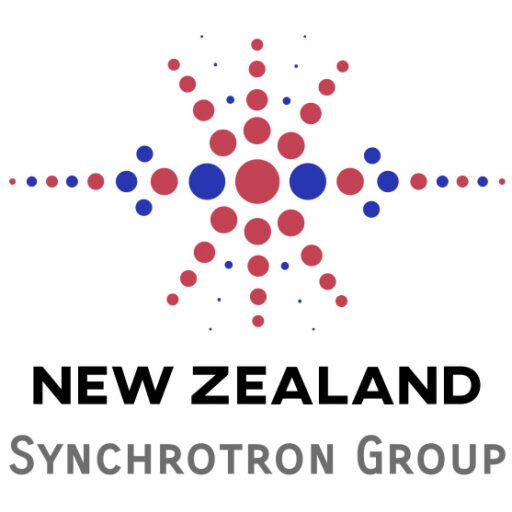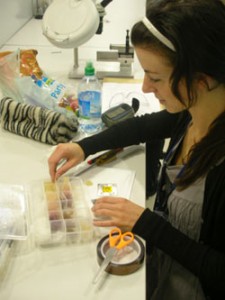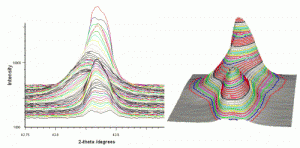Kiwi Quest for Synchrotron Silver
(as appeared in the Australian Synchrotron newsletter ‘Lightspeed’, August 2008)
New Zealand researchers are creating a new high-fashion fibre that combines the special properties of gold and silver nanoparticles with the feel of merino wool. And they’re using the Australian Synchrotron to help them.
PhD student Fern Kelly and her colleagues from Victoria University of Wellington have produced merino-silver nanoparticle composites in a range of colours, including yellow, pink, purple and green. The dyeing process is less polluting than conventional methods, the colours don’t fade in sunlight, and the nanoparticles are toxic to microorganisms but benign to human cells.
In August 2008, Fern used the powder diffraction beamline at the Australian Synchrotron to examine samples of merino wool treated with silver.
“It was excellent to obtain results to confirm the phases of silver present,” Fern said. “While further questions still remain about the bonding between the silver nanoparticles and the wool, and the mechanism of formation, I believe that synchrotron radiation characterisation methods are the key to determining the answers.
“I was very impressed with the Australian Synchrotron. We had no problems with the beam and the processing interface was relatively friendly. The users lounge is very comfortable and the coffee was great – and definitely required for the 19-hour overnight stint I did.
“I look forward to more crazy hours at the facility.”
Fern Kelly prepares wool-silver nanoparticle composites for powder diffractometry.
In situ studies of hydrogen storage materials
In August 2008 Mark Bowden and Martin Ryan from Industrial Research Limited travelled to the Australian Synchrotron for preferred access beamtime on the powder diffraction beamline. The main scientific objectives of their study were to examine the structural changes in ammonia borane (NH3BH3) leading up to and in the initial stages of hydrogen release, as a function of temperature. The goal was to observe weak crystalline intermediate phases suggested by Raman and NMR spectroscopies that are not detectable by laboratory powder diffraction equipment.
The time-series experiments did not reveal any crystalline intermediates during dehyrogenation. This eliminates the possibility of even weak crystalline intermediates since the baseline noise was less than 0.1% of the maximum peak intensity of ammonia borane. The high resolution of the synchrotron did, however, reveal some unexpected peak changes in the ammonia borane pattern (see figure). The peak shown is representative of all the ammonia borane peaks, which shifted to higher d-spacing and broadened after a short time at high temperature. Then the peaks returned to their original position and width and continued a reduction in intensity until no longer detectable. In the latter stages of observation, the peaks were clearly split into a symmetric doublet.
Analysis of this behaviour is ongoing. The work will be presented at the AMN-4 conference in Dunedin (February 2009).
In 2004 the University of Auckland hosted Dr Fulvia Arfelli, an international expert in the application of synchrotron science in the detection of breast cancer. Dr Arfelli presented a paper on the use of synchrotron science for human diagnostics, an application that is not widely known in New Zealand.
More examples of how New Zealand researchers are using synchrotron science can be found in the Science Case for New Zealand Investment in the Australian Synchrotron and Synchrotron Science produced by the Royal Society of New Zealand in December 2003.
For additional case studies please go to the Australian Synchrotron website.


